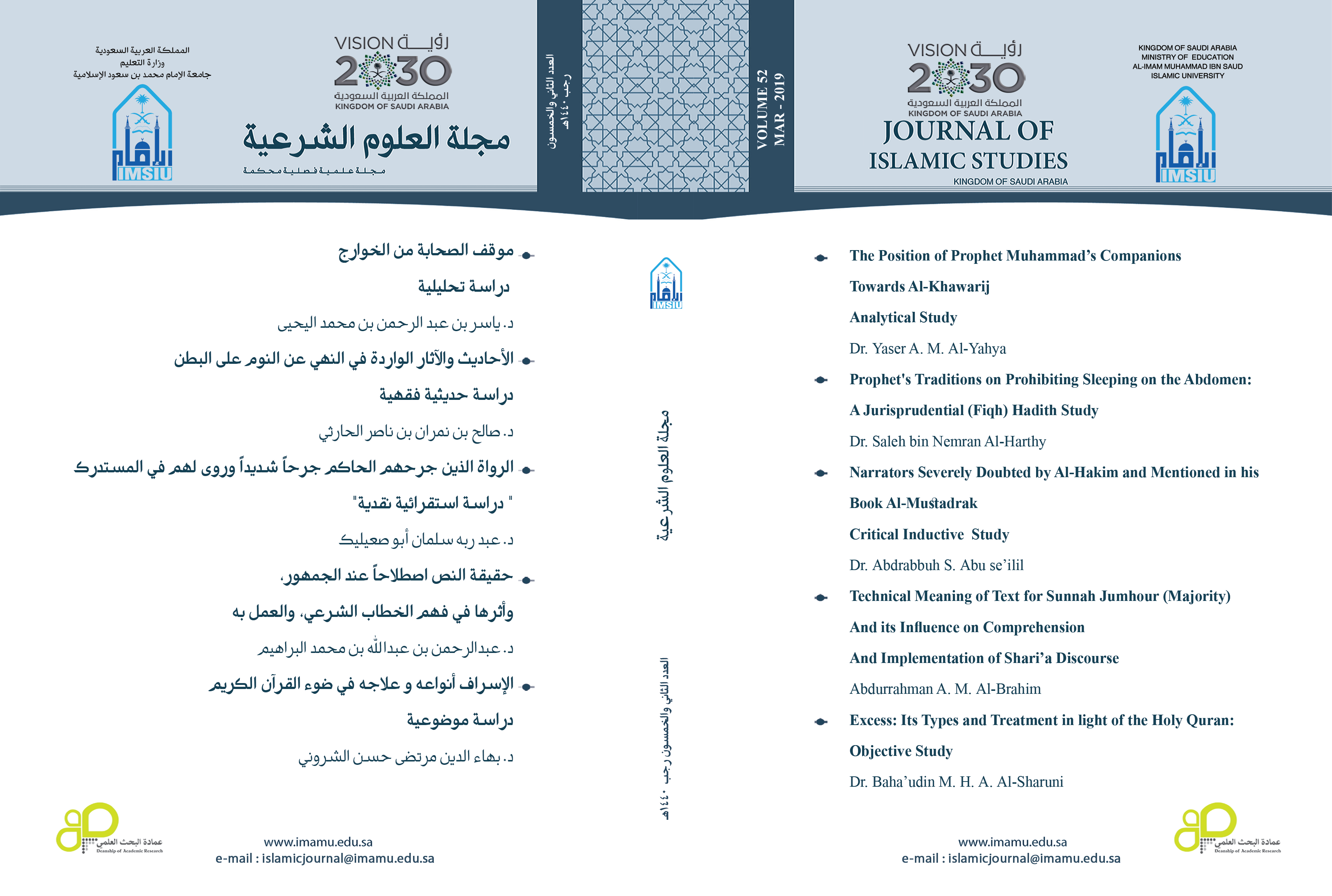Technical Meaning of Text for Sunnah Jumhour (Majority) and its Influence on Comprehension
Abstract
In this research paper I dealt with the concept of the text, showing how it is intended to be used by Al-Jumhour, the Sunnah majority scholars, who had employed two approaches to text: 1- Textuality based on verbal utterances only.
2- Textuality based on the verbal situation.
It is shown that the main reason for differences among Sunnah scolars originated in what they include in the definition of text in terms of the environmental completions of textual meaning.
The paper investigates the influence of these differences on comprehending and implementing shari’a discourse, in five areas:
- Number of texts, technically speaking: this is because texts depend, more or less, on the definition of text.
- Glorifying Shariá in the hearts of its followers: the more textually technical discourse is, the more revered it is.
- What is inferred in relation to proving Allah’s attributes. This shows matters related to His attributes, which though interpreted by logicians, Sunnah scholars take them to mean what they signify in the text, or as they occur in text.
- Refuting rulings contrary to the ahaad Hadiths. This shows Ahmad Ibn Hanbal’s approach based on the fact that such texts do not allow interpretation or opposition.
- Power of signifying and preference in cases of conflict: This shows that one aspect of the strength of a text is its signification. Hence if an utterance is a text in itself or part of a text, it has clear power. Otherwise, it lacks power. The wider the significance of a text, the more powerful it is, while the narrower it is the less significant it is. In cases of apparent contradiction, the text remains the primary reference.




